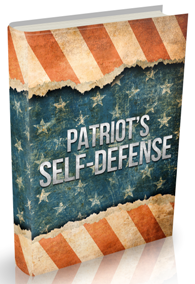If you think that a small, reliable, and easy to conceal pistol could be a lifesaver for you and your family, then this article is for you.
This pistol must be easy to shoot without too many slide controls to confuse the shooter. The caliber should not be too heavy as to frighten the shooter or cause the shooter to develop poor shooting habits.
Before you buy any pistol, do your homework and study to find out which pistol is right for you. There are hundreds of pistols out in the marketplace, and each have their good points and their bad points. Also, each person has their own private requirements, needs, and wants for their private concealed carrying pistol.
No one person can make this choice for you; you must do it yourself. And you need a lot of things in order to make the right decision.
That is why the following list was made up to assist you in gathering information that could help you in the search for this pistol.
1. The Caliber of the Handgun
The caliber of the pistol should be no smaller than 9mm and no larger than 45ACP. If all you have is a .22, 32ACP, or a 380ACP and you cannot afford another handgun, then you must use what you have for a concealed carry weapon.
2. Overall Size of the Pistol
If you are of small build, then a large pistol would be a little difficult to hide, but not impossible. Here a small pistol would work better.
If the person is of a large build, this individual could conceal a smaller or a larger pistol without too much trouble. The longer the barrel the better the shooter can sight the pistol on the target. The smaller the barrel the less sighting area for the shooter.
3. The Weight of the Pistol
The lighter the pistol, the easier and the longer the average person can carry this weapon comfortably.
The heavier the pistol the quicker the average person begins to feel the weight of the pistol and begins to get uncomfortable.
Remember the trade-off here; the lighter the pistol the more felt recoil. Heavier pistols will have less recoil.
Here you must decide between comfort of carrying and how the pistol will actually feel when you need to shoot it.
4. The Grip of the Handgun
When you grip the pistol, it should be done with a snug pressure. Do not try to crush the grip of the pistol. It should be just tight enough to control the recoil.
All fingers below the trigger finger should be gripping the pistol grip. Your trigger finger should rest comfortably outside of the trigger guard when not in the act of actually shooting the pistol. Your thumb should easily reach the slide release and the manual safety if so equipped.
If you have any fingers hanging below the pistol grip there are after market finger rests that give the shooter a place to rest their finger or fingers on.
5. The Maximum Number of Rounds the Magazine Holds
There are two basic magazine designs. The first is the single stack which holds on the average between 6 to eight rounds depending on the caliber and the length of the magazine. The other type of magazine is the double stack magazine which holds on the average 10 to 17 rounds depending on the caliber and the length of the magazine.
There are aftermarket high capacity magazines in both single stack and double stack that can double the pistols available ammunition to the shooter; but buyer beware. Some of these magazines function well and then there are some that do not.
It is still better and safer to use the magazines that came with the pistol.
6. The Reliability and Accuracy of the Pistol
The pistol you select must be reliable. It must function every time you pull the trigger. This means that the pistol must load smoothly without any hang-ups.
Fire with a good smooth pull of the trigger. Lastly reliably eject the spent shell casing. The accuracy of this pistol should be good and in theory when sighted correctly each time the bullet should impact in the same place.
7. Some Common Views on Pistol Choice
The pistol that you choose must be easy to conceal on you.
Some believe that the pistol should also be a compact pistol that is light in weight, but heavy enough to avoid the worst recoil, and be thin.
Also it should have at least 6 to 8 rounds of ammunition that can stop a person (others will say the pistol should accommodate a double stacked magazine with 10 – 15 rounds of ammunition that can stop a person).
Either way, the shooter must be able to draw and fire quickly and accurately.
8. The Price of the Pistol
When buying the pistol spend the most money that you can really afford to spend. Do not go over board and spend so much money that you will break the bank or cause you to cut back on other essentials that are needed.
If you want a better grade of pistol than you can afford:
- look into a factory refurbished pistol with a warranty,
- buy a good slightly used second hand pistol that you have test fired,
- or buy a pistol that you have personally fired from a trusted friend.
9. The Warranty on the Pistol
Choose a pistol that has a well trusted warranty. A good warranty should cover the pistol for 3 to 5 years against poor materials, bad design, and poor workmanship, then followed by a limited warranty that covers the pistol for another 5 or so years.
There should not be any hidden fees dealing with any warranty service. A good warranty service center should pay shipping to and from the service center and have a quick turnaround time
10. The Ease of Obtaining Spare Parts and Accessories
After buying the pistol of your choosing there should be a good supply of spare parts and accessories. This allows you to buy spare magazines, upgrade parts, and anything else to accessorize your pistol to the performance that you require.
11. The Ease of Obtaining Ammunition
The pistol that you choose should use standard easy to obtain ammunition. The best ammunition to use is one that is used by the US Military or police forces throughout the United States. The best calibers to consider and use are the 9mm, 40 caliber, and the 45ACP.
Stay away from custom expensive ammunition that can dry up at a moment’s notice.
12. The Popularity of the Pistol
Always try to choose a pistol from a popular, well known manufacturer. The better you know the maker of the pistol you are choosing, the easier it will be to understand the inner workings and know what to respect when shooting it or carrying it.
In a time of civil unrest it is very important that you own and know how to use a small, reliable, and easy to conceal pistol for self-defense. Before you waste your time and money on a pistol that does not meet your needs, take the time to research which pistol is right for you. Talk to others and shoot different guns, then you’ll finally discover which one of those pistols suits you.
Stay close to find out what would we choose for a concealed pistol. Until then, use the comment section below to share your experience about finding the perfect handgun for self-defense.
by Fred Tyrell







